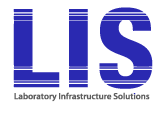Executive Summary
High containment laboratories, including Biosafety Level 3 (BSL-3) and Biosafety Level 4 (BSL-4) facilities, handle some of the world’s most dangerous pathogens. These environments rely on tightly controlled engineering systems—including ventilation, filtration, access control, power, and waste management—to maintain safe operations. Remote monitoring technologies have become essential for sustaining biosafety, operational resilience, and regulatory compliance in these facilities. This paper outlines the functional benefits of remote monitoring systems and their role in strengthening containment integrity, improving oversight, reducing cost, and enhancing emergency readiness.
1. Introduction: A New Imperative for Remote Oversight
High containment laboratories are often expected to operate efficiently in resource-limited, remote, or high-risk contexts, such as during infectious disease outbreaks. In these environments, the ability to continuously monitor critical safety systems—without physical presence inside the containment zone—is vital. Remote monitoring solutions provide secure, real-time oversight of environmental conditions, safety-critical equipment, and operational status across key systems.
2. Functional Benefits of Remote Monitoring Systems
2.1 Enhanced Operational Visibility
Remote systems offer continuous access to data from multiple sources, including HVAC performance, filter pressure differentials, room pressure zoning, airflow direction, and access control logs. Facility managers and biosafety officers can visualize these indicators in real time, quickly detect anomalies, and make informed decisions without entering the containment zone.
Benefits:
Centralized dashboards consolidate critical system readings for ease of interpretation.
Historical data supports graphical trend analysis for resource allocation and operational planning
Notifications and Alerts enable prompt maintenance and inspection response

Aggregate historical data graph on LIS-Labs remote monitoring system.
2.2 Reduced Personnel Exposure and Downtime
Maintenance and verification often require personnel to enter high containment areas, exposing them to infectious risks and requiring full personal protective equipment (PPE). Remote monitoring enables condition-based assessments and off-site diagnostics, reducing the need for entry and limiting exposure.
Benefits:
Fewer entries into containment zones
Lower PPE use and reduced fatigue
Quicker identification and resolution of issues
2.3 Early Warning and Fail-Safe Activation
Systems can be configured to generate automatic alerts for deviations in key parameters such as negative pressure loss, temperature or humidity fluctuations, or backup power failure. These alerts enable timely decisions, including activation of fail-safes.
Benefits:
Continuous detection of faults in critical systems
Rapid containment of early-stage failures
Seamless integration with Building Management Systems (BMS) for live reporting

Display indicates the need to attend to filters. This is supported by email alert.

Selected field instruments are certiefied to support accurate pressure control, read by the remote monitoring system for remote alerts and alarming.
2.4 Streamlined Compliance and Reporting
BSL-3 and BSL-4 laboratories must demonstrate compliance with stringent biosafety standards. Remote monitoring automates the collection, storage, and reporting of system performance data, making audits and inspections more efficient.
Benefits:
Automated data logging for regulatory documentation
Simplified preparation for inspections
Secure, tamper-resistant data records
2.5 Support for Remote or Distributed Facilities
Mobile and modular containment laboratories deployed in remote or under-resourced areas often lack on-site technical support. Remote monitoring allows centralized oversight from national institutions or international partners, improving sustainability.
Benefits:
Supervision of field-deployed and rural laboratories
Scalable national-level oversight
Expert input without the need for travel
2.6 Integration with Predictive Maintenance
When paired with analytics platforms, remote monitoring supports predictive maintenance by identifying early signs of wear or system degradation in components such as filters, fans, and sterilization equipment.
Benefits:
Reduction in unplanned downtime
Increased lifespan of critical equipment
Cost savings through targeted, scheduled interventions
3. Technical Considerations for Implementation
For remote monitoring to be effective in high containment environments, systems must adhere to rigorous technical standards:
Network Security: Encrypted communication and firewall isolation to prevent cyber intrusion
Sensor Reliability: Calibrated and certified sensors with redundancy, especially for critical readings such as negative pressure differentials.
Power Resilience: Backup power integration with fail-safe system design.
Interoperability: Full compatibility with existing Building Management Systems (BMS).
Data Integrity: Secure data logging with timestamps and controlled access.
Internet Service: Appropriate connectivity solutions to mitigate the risk of intermittent internet access,especially in remote settings.
4. Conclusion: From Oversight to Assurance
Remote monitoring is no longer an optional feature—it is a critical component of modern high containment laboratory operations. It enhances biosafety compliance, reduces operational risk, and supports efficient management of complex systems. Whether for permanent, mobile, or modular laboratories, remote monitoring extends institutional oversight, strengthens biosurveillance capabilities, and improves readiness in response to biological threats.
Standard in Every LIS-Labs Facility
At LIS-Labs, remote monitoring is not an add-on—it is a standard feature integrated into every high containment laboratory we deliver. Our systems provide real-time visibility and control across all critical functions, ensuring our clients maintain continuous oversight, no matter where their facilities are deployed. Every LIS-Labs solution includes built-in remote monitoring capability, tailored to end-user requirements and compliant with international biosafety standards. We design for resilience, operability, and long-term serviceability—because your biosafety is our mission.


